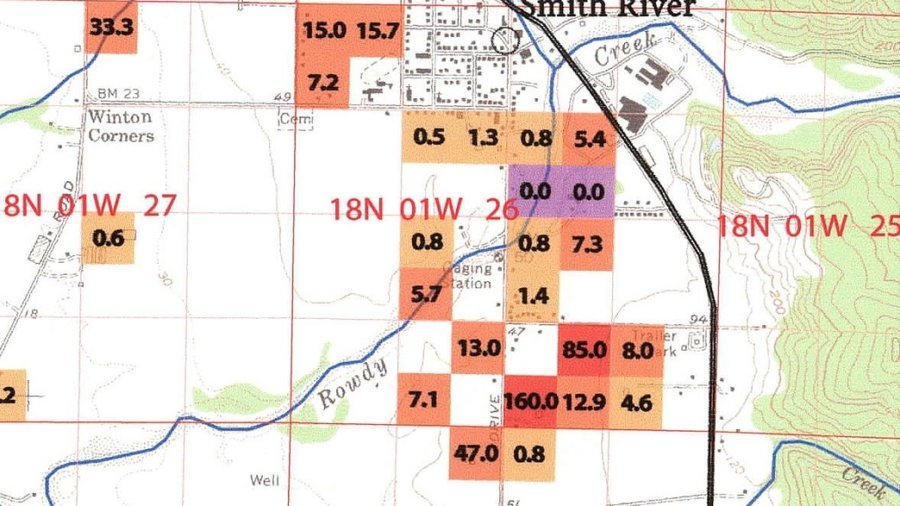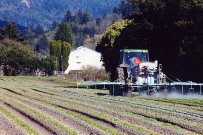Reviewing reports issued by the California North Coast Regional Water Quality Control Board will get a person quickly into the weeds of what’s really going on at the Smith River estuary. Suffice it to day that, given the Smith River’s status as one of the cleanest rivers in the world and its national importance as a salmonid fishery, most people are shocked to learn that, four times since the mid-1980s, water quality scientists have discovered significant pesticide toxicity in the ground- and surface waters of the estuary.
The first such discovery was a stunner: During the 1980s, at least fifty domestic wells were found to contain exceptionally high levels of the carcinogenic pesticides 1,2-dichloropropane and aldicarb. One of the wells turned up at 160 parts per billion of 1,2-D, more than 300 times higher than allowed by state law (see map above).
In 2002 the Smith River Project (which merged with Siskiyou Land Conservancy in 2004) discovered that at least a dozen wells in Smith River remained contaminated with 1,2-D. The Water Board later confirmed the results.
In 2010, acting on repeated requests by Siskiyou Land Conservancy, the Water Board tested Smith River estuary surface waters and found that the water in one creek that passed through Easter lily fields was toxic to invertebrates that make up the basis of the salmonid food chain. The Water Board also found copper levels that were 28 times higher than allowed by state law. (Easter lily farmers use approximately 40,000 pounds annually of Class I copper fungicides.)
In 2013 the Water Board scientists finally returned to the Smith River estuary, and found three streams that passed through Easter lily fields were toxic, in four places. They also found ten pesticides in surface waters. In one place — the mouth of Rowdy Creek, which passes directly through Easter lily fields and is one of the Smith River’s two most important spawning streams for endangered coho salmon — scientists discovered “acute reproductive toxicity,” meaning that invertebrates that make up the salmonid food source can’t even survive in this water.
In late 2015 the Water Board issued a report on the most recent toxicity. That report is here.
For an analysis of what all this means, read the Siskiyou Land Conservancy report here.
Check back to this page for more water quality reports.


